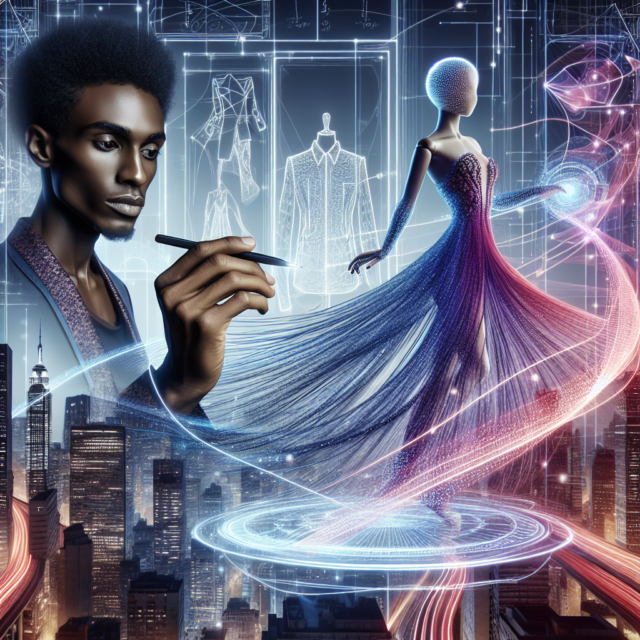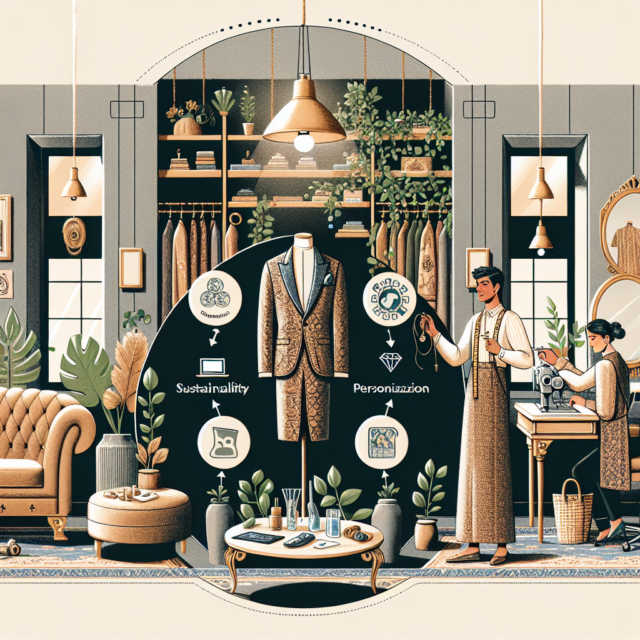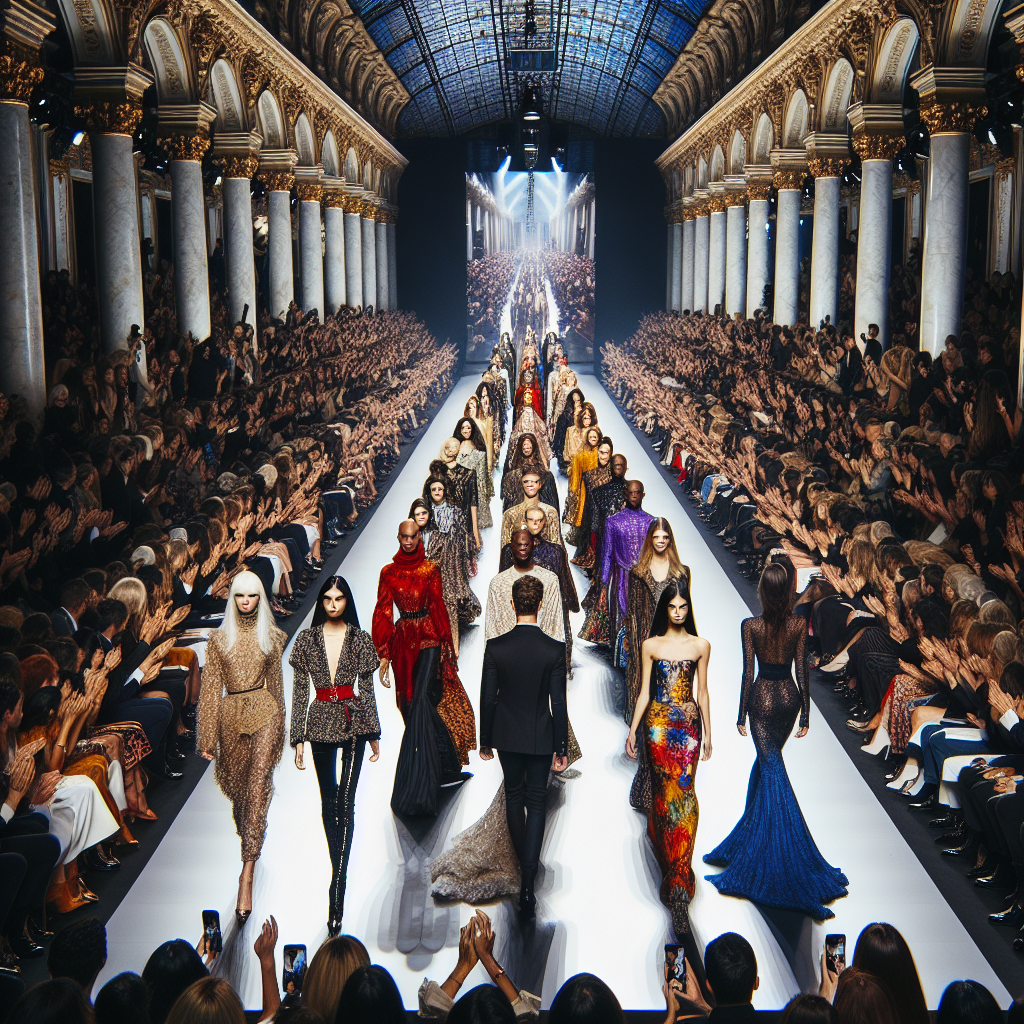Exploring the Future Digital Faces of Fashion
Exploring the Future Digital Faces of Fashion
The fashion industry has always been a dynamic and ever-evolving landscape. As we move further into the digital age, technology is increasingly interwoven with fashion, creating new opportunities and challenges. From the design process to the way fashion is showcased and consumed, the digital transformation is reshaping the industry in unprecedented ways. This article delves into the future digital faces of fashion, exploring the intersection of technology and fashion design, the advent of virtual runways, and the emergence of digital avatars in virtual worlds.
The Intersection of Technology and Fashion Design
The fusion of technology with fashion design marks a significant evolution in the way garments are conceptualized and created. Designers are now utilizing advanced software tools that enable them to sketch and visualize their creations in a digital space. This allows for a more efficient design process, with the ability to make real-time adjustments and experiment with different styles and patterns without the need for physical materials. The use of 3D modeling software and AI-driven design tools is revolutionizing the creative process, enabling designers to push the boundaries of traditional fashion aesthetics.
Moreover, technology is facilitating sustainable fashion practices. Digital design tools reduce waste by allowing designers to perfect their patterns before cutting any fabric. Additionally, the use of digital prototyping minimizes the need for physical samples, further reducing material consumption. This shift towards a more sustainable approach is crucial as the industry grapples with its environmental impact.
The integration of wearable technology is another facet of this intersection. Designers are embedding smart fabrics and electronic components into clothing, creating garments that can monitor health metrics, change colors, or even charge electronic devices. This convergence of fashion and function is opening new avenues for innovation, making fashion not only a statement of style but also a tool for enhancing everyday life.
Collaboration between tech companies and fashion houses is becoming increasingly common. Brands are partnering with tech giants to develop new fabrics, create immersive shopping experiences, and streamline supply chains. These collaborations are fostering a culture of innovation, driving the industry forward into a new digital era.
The role of data analytics in fashion design cannot be overstated. Designers are leveraging big data to understand consumer preferences and predict trends, allowing them to tailor their collections more effectively. This data-driven approach is helping brands stay ahead of the curve, ensuring they remain relevant in a rapidly changing market.
Finally, the rise of digital fashion—clothing designed specifically for virtual environments—highlights the growing importance of technology in fashion. As consumers spend more time in digital spaces, the demand for virtual clothing and accessories is increasing. This trend is not only transforming how fashion is consumed but also how it is designed, with digital garments offering limitless possibilities for creativity.
Virtual Runways: Revolutionizing Fashion Shows
The traditional fashion show, with its physical runways and exclusive audiences, is undergoing a digital transformation. Virtual runways are emerging as a revolutionary platform for showcasing collections, breaking geographical barriers and democratizing access to fashion events. These digital shows leverage cutting-edge technology, such as augmented reality (AR) and virtual reality (VR), to create immersive experiences that captivate audiences worldwide.
One of the most significant advantages of virtual runways is their accessibility. Unlike traditional fashion shows, which are often limited to industry insiders and select guests, virtual shows can be streamed to a global audience. This inclusivity allows brands to reach a broader demographic, engaging with consumers who may not have had the opportunity to attend in-person events.
The use of AR and VR technology enhances the viewer experience, allowing audiences to interact with collections in ways previously unimaginable. Virtual runways can transport viewers to fantastical settings, providing a unique backdrop for each collection. This immersive approach not only showcases the garments but also tells a story, creating a memorable experience that resonates with viewers.
Virtual runways also offer brands a more sustainable alternative to traditional fashion shows. By eliminating the need for physical venues, travel, and production materials, these digital events significantly reduce the environmental footprint of fashion presentations. This aligns with the industry’s growing focus on sustainability and responsible practices.
Moreover, virtual runways provide designers with greater creative freedom. Without the constraints of a physical space, designers can experiment with innovative concepts and presentation styles. This freedom encourages bold, avant-garde approaches, pushing the boundaries of how fashion is presented and experienced.
The shift towards virtual runways is also influencing how fashion collections are timed and released. Brands are no longer bound by the traditional fashion calendar, allowing for more flexibility in launching new collections. This adaptability is crucial in a fast-paced digital world, where consumer preferences and trends can change rapidly.
Digital Avatars: Personal Style in Virtual Worlds
In the realm of virtual worlds, digital avatars are becoming the new face of personal style. As people spend more time in digital spaces, from social media platforms to online gaming environments, the way they express their individuality is evolving. Digital avatars serve as a representation of oneself, and fashion plays a crucial role in shaping these virtual identities.
The rise of digital avatars has led to a burgeoning market for virtual fashion. Brands are creating digital clothing lines and accessories specifically designed for avatars, offering consumers the opportunity to personalize their digital personas. This trend is blurring the lines between physical and virtual fashion, creating a new dimension of style that transcends traditional boundaries.
Customization is at the heart of avatar fashion. Consumers can mix and match digital garments, experiment with different styles, and create unique looks that reflect their personal tastes. This level of personalization is empowering, allowing individuals to express themselves in ways that may not be possible in the physical world.
The use of blockchain technology and non-fungible tokens (NFTs) is adding another layer to digital fashion. By creating unique, traceable digital assets, NFTs enable consumers to own one-of-a-kind virtual garments. This fusion of technology and fashion is attracting attention from both fashion enthusiasts and tech-savvy consumers, driving the growth of the digital fashion market.
Digital avatars are also influencing the way brands engage with their audiences. By creating virtual fashion shows and interactive experiences, brands can connect with consumers in immersive digital environments. This engagement is fostering a sense of community and loyalty, as consumers feel more connected to the brands they interact with in virtual spaces.
As the line between the physical and digital worlds continues to blur, the role of digital avatars in fashion is likely to grow. With advancements in technology, avatars may soon become an integral part of the fashion ecosystem, influencing trends and driving innovation in both virtual and physical realms.
The future digital faces of fashion are reshaping the industry in profound ways. From the integration of technology in design to the rise of virtual runways and digital avatars, the landscape of fashion is evolving to meet the demands of a digital world. As technology continues to advance, the possibilities for innovation in fashion are limitless. Embracing these changes will be crucial for brands looking to stay relevant and thrive in an increasingly digital marketplace. The intersection of fashion and technology promises a future where creativity knows no bounds, offering exciting opportunities for designers, brands, and consumers alike.

















